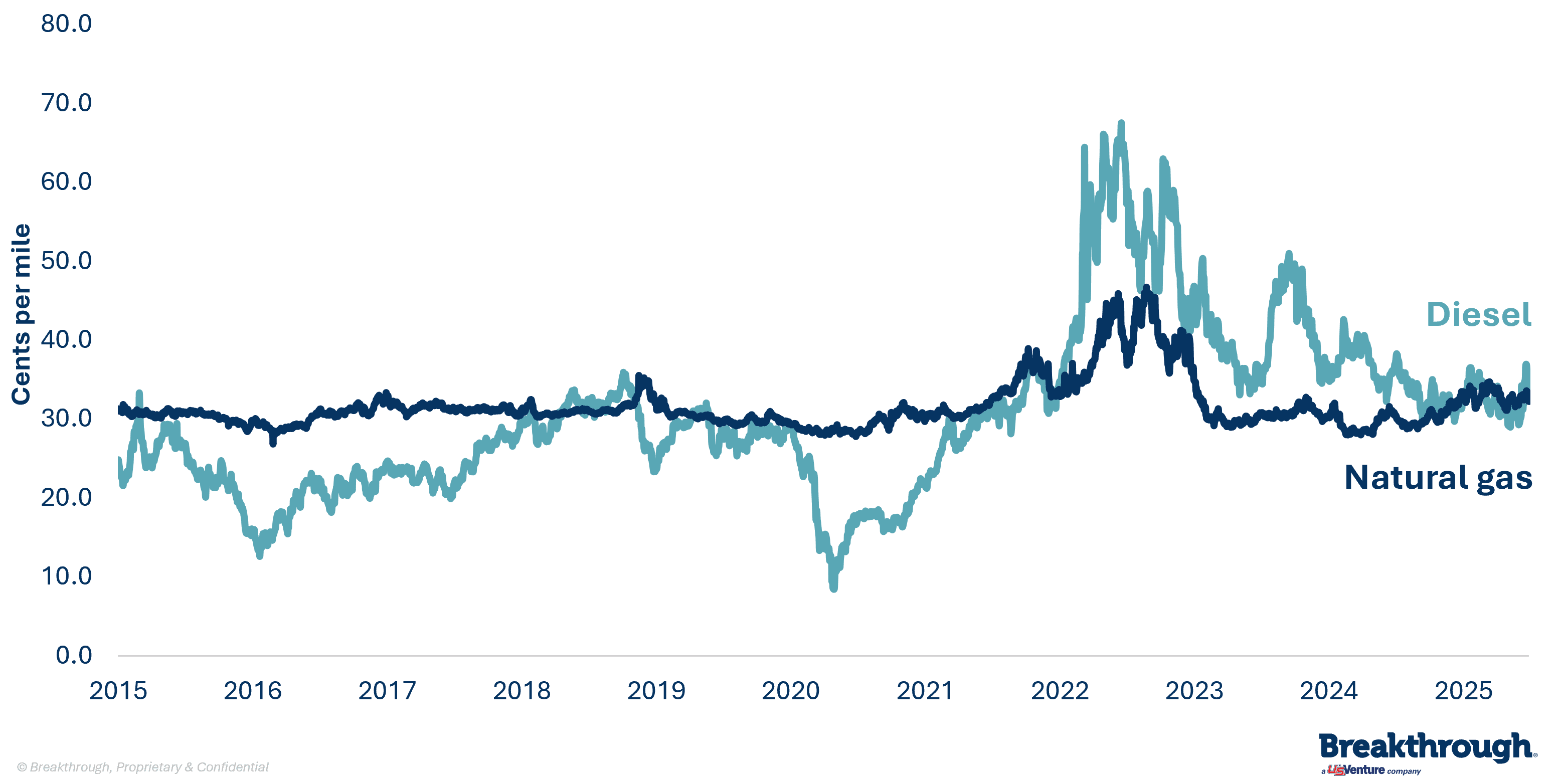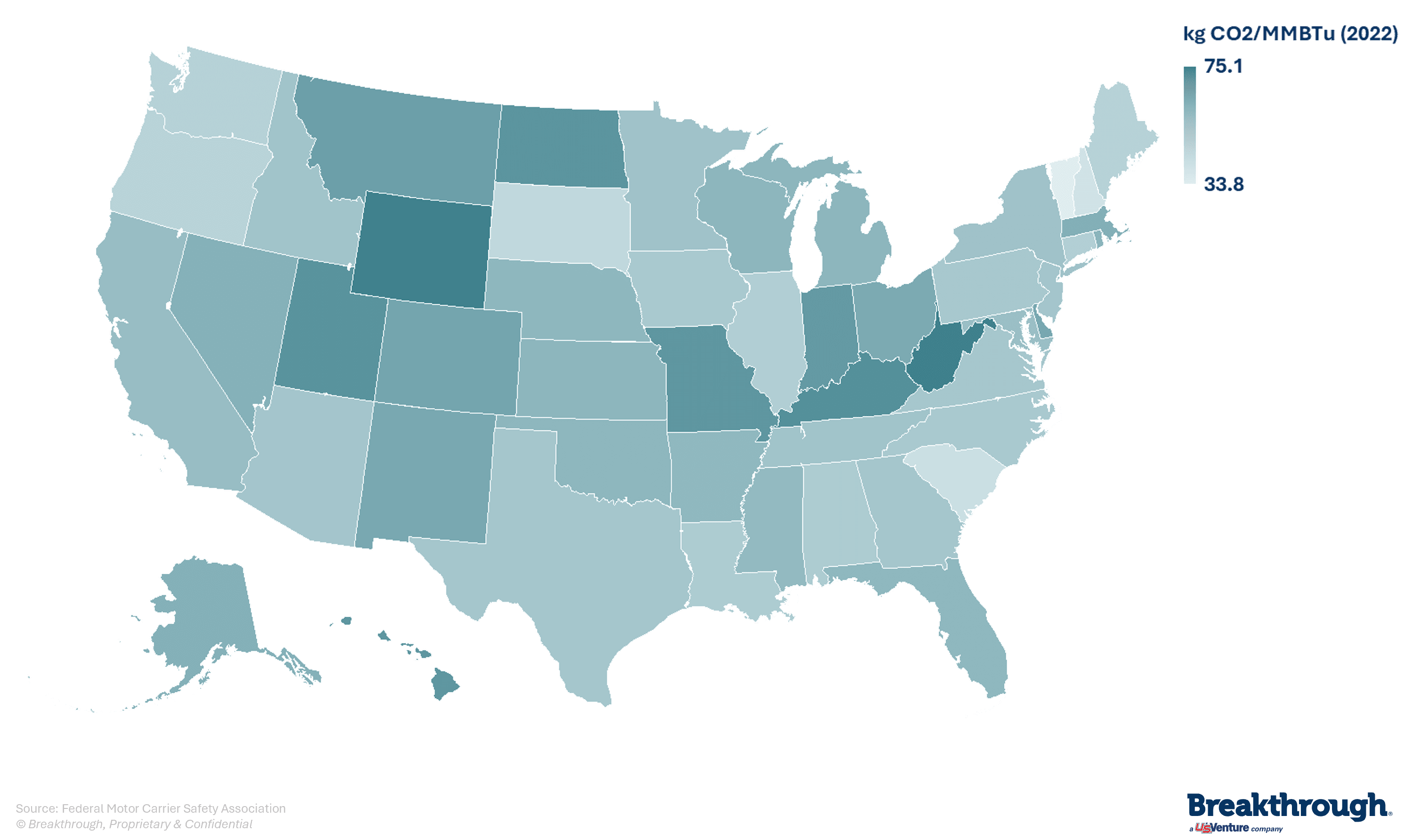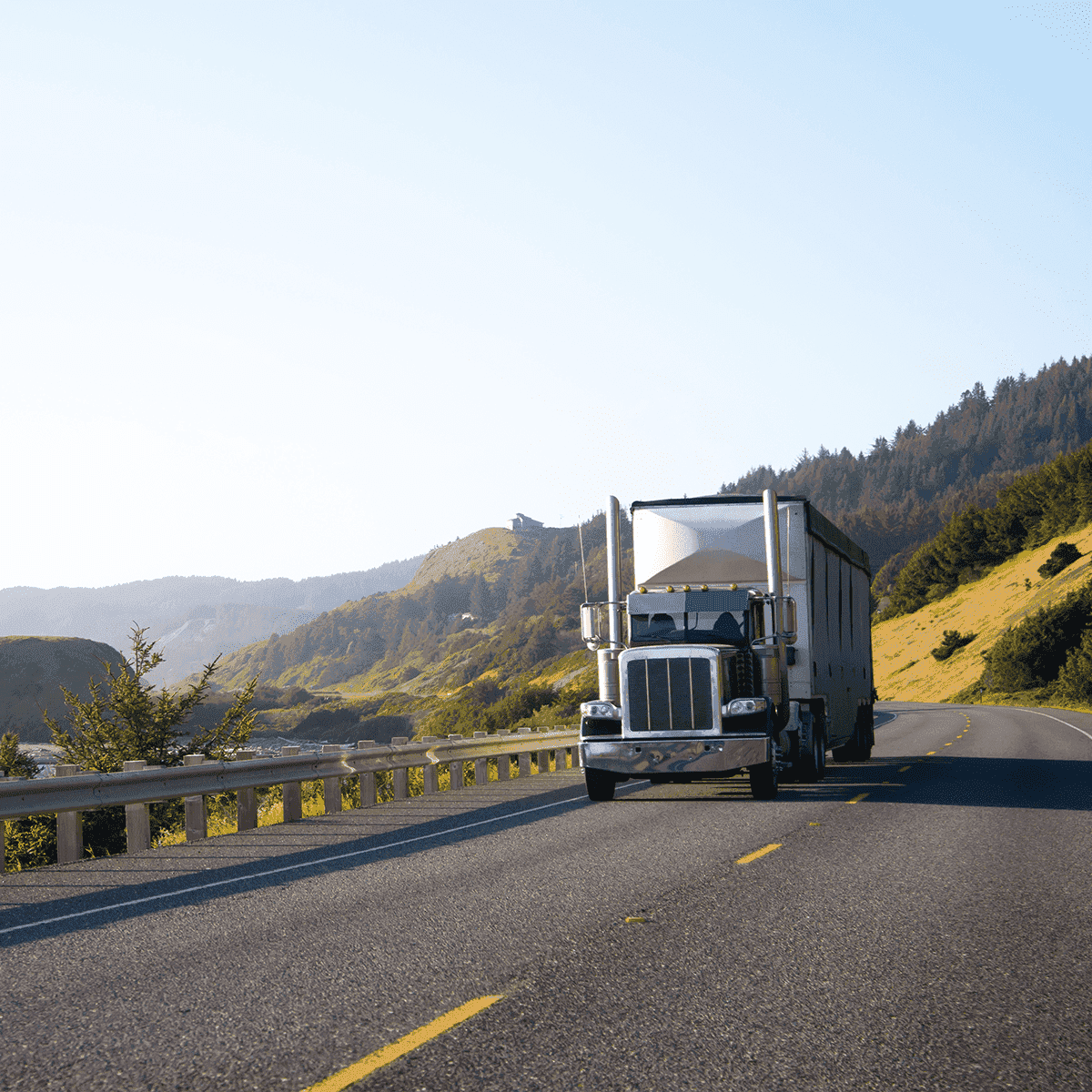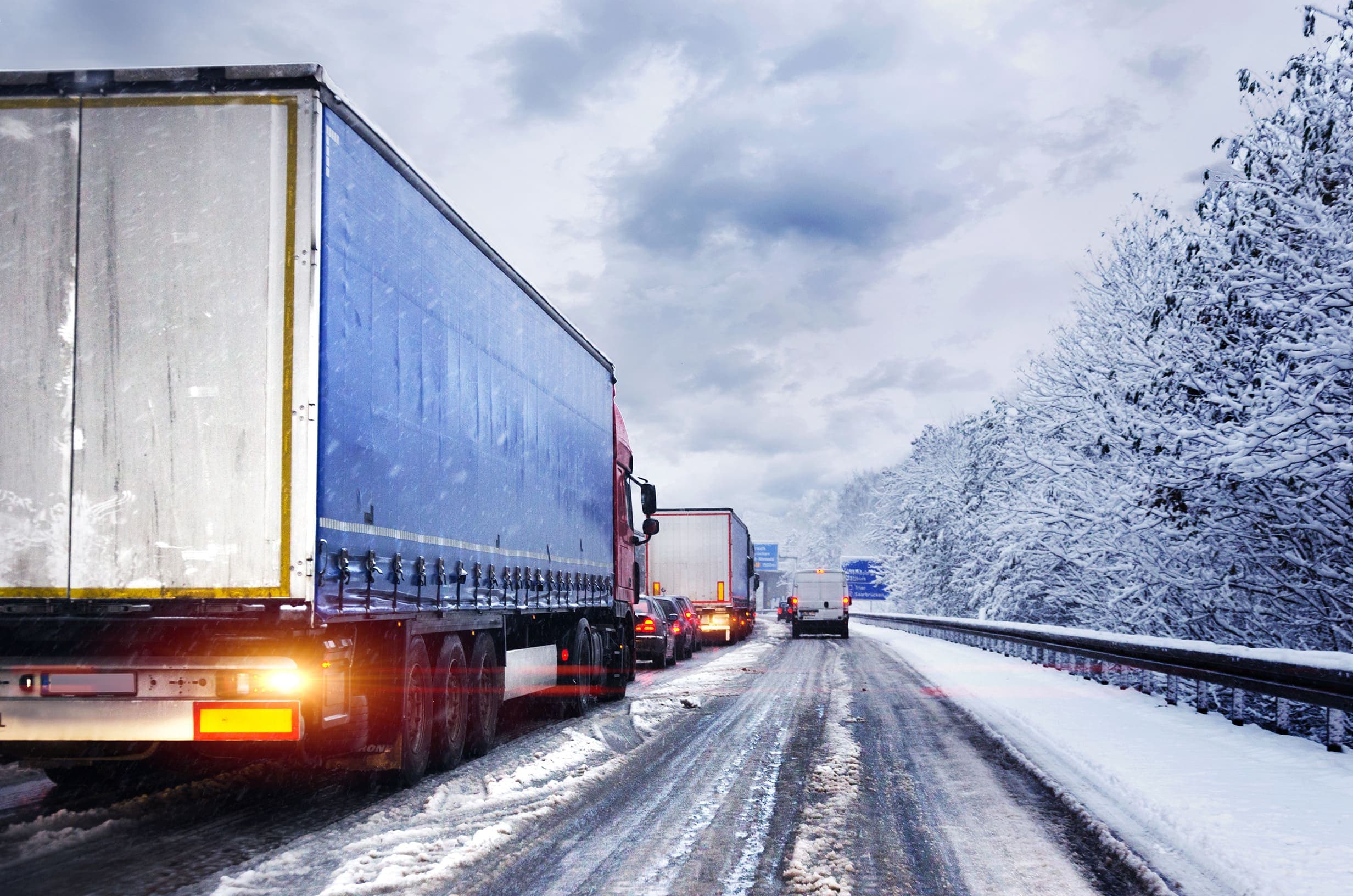How AI in Transportation will Accelerate Strategies in 2026

Trending
Top Posts
Fuel
Why Do Shippers Use The DOE Fuel Surcharge? A History Of The National Fuel Surcharge
5 min read
December 5, 2025
Market Events
How Ukrainian Drone Strikes on Russian Refineries Impact Your Fuel Costs
6 min read
November 20, 2025
Freight
The Definitive Guide on Fuel Management Systems
7 min read
November 11, 2025
8 min read
September 10, 2025

Share:
Table of contents
Browse the table of contents to jump straight to the part you’re looking for
Shippers and carriers face a complex landscape when diversifying their transportation energy mix. It requires balancing capital investment, energy costs, infrastructure availability, and unique sustainability goals.
While diesel remains the dominant fuel in heavy-duty transportation, alternative energies can be operationalized for fleets today. In fact, we've seen a 24% increase in alternative energy adoption through CleanMile. Each option, from natural gas to electric vehicles, presents distinct benefits and challenges.
While diesel is the current standard, alternative fuels are rapidly gaining market share.
Each fuel type—including renewable diesel, natural gas, electric, and biodiesel—offers a unique combination of benefits and drawbacks.
Infrastructure availability and upfront costs continue to be significant barriers to widespread adoption.
Recent policy changes, like the 45Z Clean Fuel Production Tax Credit, are making alternative energies more economically attractive.
Taking a closer look at four main types of alternative energies for heavy-duty transportation will help shippers make the best decisions for their organization’s strategy.
Renewable Diesel
Natural Gas
Electric Batteries
Biodiesel
Renewable diesel, produced from fats and oils, is chemically almost identical to petroleum diesel. This makes it a "drop-in" fuel, capable of directly replacing conventional diesel without the need for engine modifications.
Renewable diesel’s greatest advantage is its compatibility with existing diesel engines and infrastructure, offering significant emissions reductions without additional costs for engine upgrades. However, its production cost has historically been higher, limiting widespread adoption. Incentives like California’s Low Carbon Fuel Standard (LCFS) are helping to bridge the gap, leading to explosive growth in the market. In California alone, renewable diesel volumes have increased nearly 2,000% over the last decade.
Renewable diesel (R100) reduces carbon intensity by approximately 68% compared to conventional diesel. Programs such as the Renewable Fuel Standard (RFS) and the updated 45Z tax credit are driving its adoption by rewarding producers for lower-carbon alternatives. These incentives are making renewable diesel more financially viable, further encouraging its use in reducing transportation emissions.
Natural gas is a versatile fuel available in several forms, with its sustainability impact determined by its source. The main types for transportation are Compressed Natural Gas (CNG) and Renewable Natural Gas (RNG).
RNG: Chemically identical to CNG, RNG is produced from renewable sources like landfills, animal waste, and other organic matter. This production process captures methane that would otherwise enter the atmosphere, making RNG a net-zero or even carbon-negative fuel.
CNG: Sourced from fossil fuels, CNG has been used for decades and is gaining traction in heavy-duty transport due to its stable, low price point.
Natural gas offers much greater price stability compared to the volatility of diesel.

Technological advancements are also closing the performance gap. The Cummins X15N engine, for example, delivers diesel-like performance with a range of up to 1,200 miles on a single fill, and major truck manufacturers like Peterbilt, Kenworth, and Freightliner are now offering it.
A significant challenge is the upfront investment required for new engines and fueling infrastructure. However, with over 770 fast-fill CNG stations in the U.S., the network is well-established and compatible with RNG.
CNG burns much cleaner by emitting fewer greenhouse gas (GHG) emissions than gasoline or diesel at the point of combustion. Yet, it is still a fossil fuel, and most of it comes from large-scale drilling operations, which leaves a large carbon footprint. The real sustainability win comes from RNG, which can deliver a carbon intensity reduction of up to 198% compared to diesel, depending on the feedstock. This makes it a powerful tool for shippers aiming to achieve aggressive emissions reduction targets. Federal and state incentives further improve its financial case, especially in leading markets like California.
Battery-powered electric vehicles (BEVs) are poised to play a major role in the future of freight. While mainstream adoption in heavy-duty applications is still emerging, major shippers, retailers, and carriers are piloting use cases like drayage.
The primary benefits of BEVs are zero tailpipe emissions and lower energy costs compared to diesel. Maintenance costs for heavy-duty electric vehicles (HDEVs) are projected to be 40-70% lower than for diesel trucks.
The biggest hurdle remains the lack of heavy-duty charging infrastructure. Initial adoption is most practical for private fleets running dedicated, predictable routes where on-site charging can be installed. Range and battery weight are also limitations, though technology is advancing rapidly. Projects like Terawatt Power’s I-10 charging corridor, set to launch in 2027, will feature megawatt-level chargers capable of adding 250 miles of range in just five minutes, addressing both range and downtime concerns.
While BEVs have no tailpipe emissions, their true sustainability impact depends on the lifecycle emissions of the electricity used to charge them. Power from renewable sources like wind or solar is significantly cleaner than power from coal plants.

As the U.S. energy grid becomes cleaner, the sustainability profile of BEVs will continue to improve. Even with the current grid mix in states like California, HDEVs offer a carbon intensity reduction of around 17% against diesel.
Biodiesel, made from animal fats or vegetable oils like soybean oil, is a leading alternative fuel. It is commonly blended with conventional diesel, with popular options including B5 (5% biodiesel) and B20 (20% biodiesel).
Biodiesel offers an easy entry point for reducing emissions, but its performance in cold weather poses challenges. At low temperatures, biodiesel can gel, potentially harming engines. As a result, most engine manufacturers do not support blends above 20%. However, advancements like Optimus Technologies’ pilot program for B99 biodiesel are helping fleets overcome these limitations by enabling vehicles to run on up to 99% biodiesel, even in colder climates.
Biodiesel (B100) can reduce carbon intensity by up to 73% compared to conventional diesel, making it a valuable tool for lowering emissions. Initiatives such as the 45Z Clean Fuel Production Tax Credit are expected to bolster production, improving its financial viability.
Alternative fuels are energy sources used in transportation that differ from traditional fossil fuels like diesel and gasoline. Examples include renewable natural gas, renewable diesel, and electricity which offer varying benefits in terms of sustainability, cost, and emissions reduction.
Biofuels, such as renewable diesel and biodiesel, are made from organic materials like vegetable oils or animal fats. Alternative fuels encompass a broader range, including biofuels, natural gas, and electricity, each with unique applications and benefits.
Natural gas is the most widely used alternative fuel in transportation. Compressed natural gas (CNG) and renewable natural gas (RNG) are chemically identical energy types created from methane gas that can be utilized in a shipper's network to reduce emissions. For both alternative fuels, the total cost relies less on volatile commodity costs and more on factors like distribution, taxes, and compression fees.
Alternative fuels are advancing rapidly, driven by significant investments in trucks and infrastructure. Notable developments include the Cummins X15N engine, offering diesel-like performance with a range of up to 1,200 miles on a single fill. Optimus Technologies is testing B99 biodiesel for fleets, enabling vehicles to operate on up to 99% biodiesel. Additionally, Terawatt Power will launch the I-10 charging project in 2027, featuring six charging sites equipped with megawatt-level chargers capable of adding up to 250 miles of range in just five minutes.
RNG offers a 198% reduction in carbon intensity compared to conventional diesel, making it a cleaner and more sustainable option. It also provides greater cost stability and is more economical than diesel. Plus, with a wide network of fueling stations available across the United States, natural gas is a practical and accessible choice for transportation.
Sustainability is no longer just a trend—it’s a key priority that will shape the future of the transportation industry. By aligning sustainability goals with budgets and timelines, monitoring market trends, and focusing on small, actionable steps like pilot programs and partnerships, shippers can lay the foundation for long-term success. Transitioning away from diesel and diversifying your energy portfolio may seem daunting, but these proactive measures will create a more resilient, flexible supply chain. Those who act now will not only adapt to the clean energy transition but also position themselves as leaders in a more sustainable future.
CleanMile
Our solutions help shippers reduce emissions, cut costs, and build a sustainable supply chain.


5 min read
December 5, 2025
The DOE fuel surcharge is an outdated, inaccurate method for fuel reimbursement. Learn why it costs you money and discover a modern, market-based alternative.
Read more
6 min read
November 20, 2025
Understand the impact of Ukrainian drone strikes on Russian refineries. Learn why diesel prices are volatile and how to protect your budget from market shocks.
Read more
7 min read
November 11, 2025
Discover how fuel management systems cut costs, track emissions, and improve reimbursement accuracy for modern freight operations.
Read more